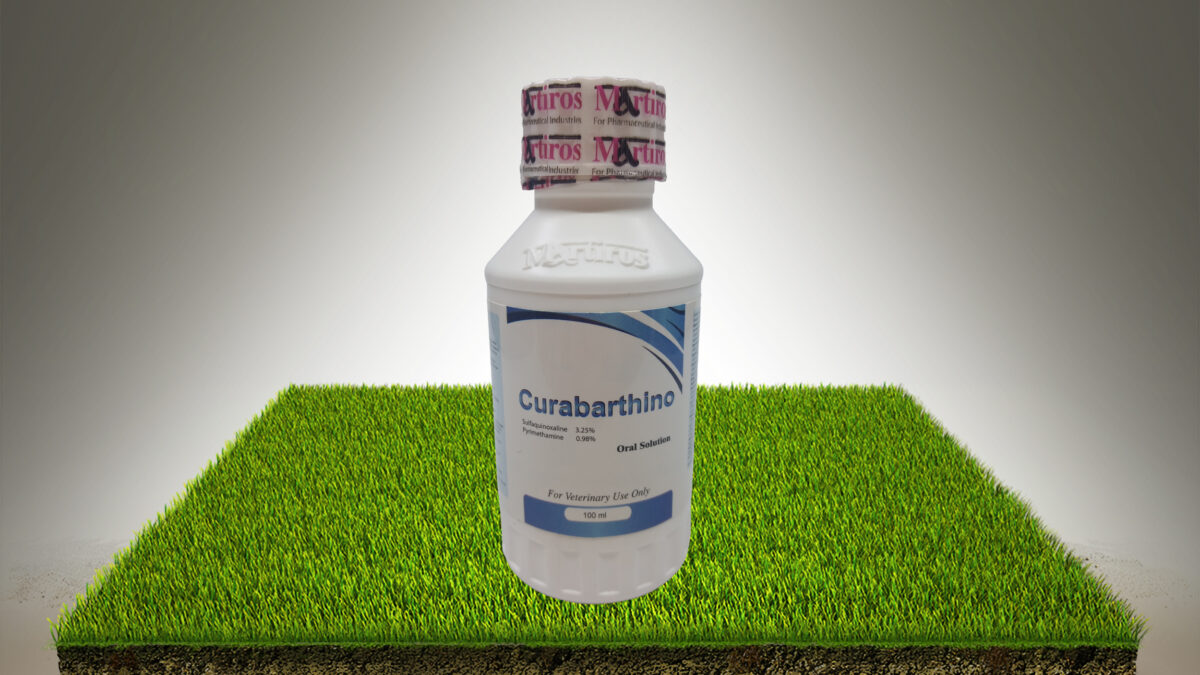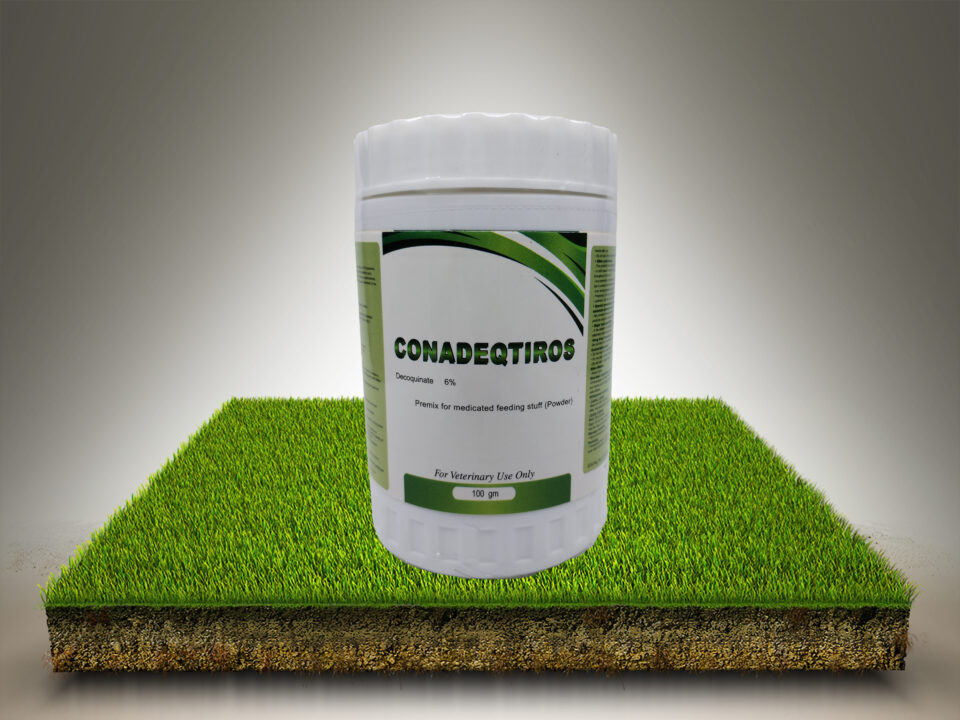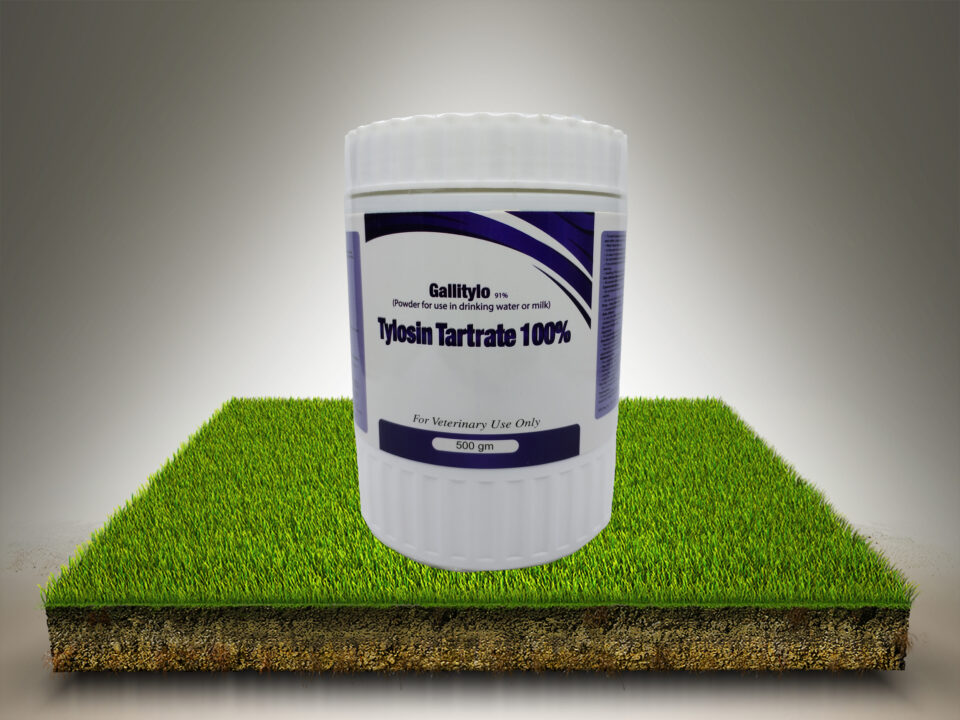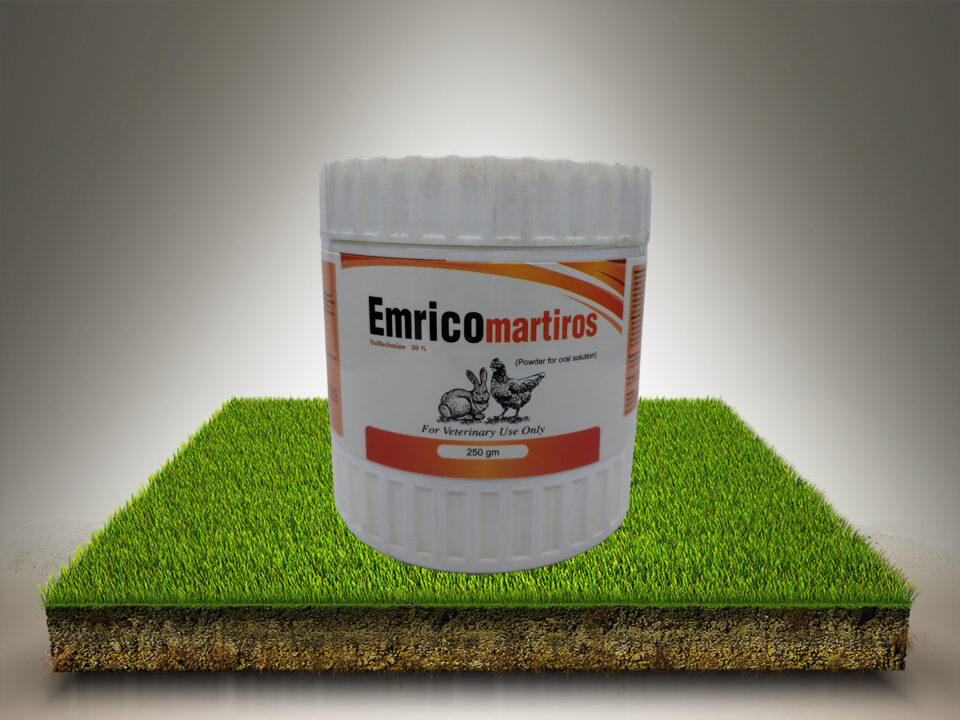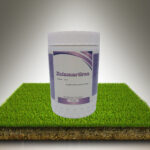
Zolamartiros
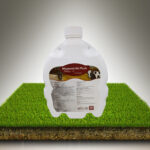
Moximartiro Plus
Oral Solution
For veterinary use only
Composition :
Each 1 L contains:
Sulfaquinoxaline 32.5 gm
Pyrimethamine 9.8 gm
Properties:
Sulfaquinoxaline is a chemotherapeutic agent with activity against folic acid synthesizing bacteria, Rickettsiae and coccidia. Its action is bacteriostatic rather than bactericidal. It mechanism of action is based on competitive inhibition of dihydropteroate production, the direct precursor of folic acid, by competition of sulfaquinoxaline with PABA paraamino-benzoic acid
Pyrimethamine blocks the conversion of DFA to tetrahydrofolic acid by inhibiting dihydrofolate reductase. When sulfas and dihydrofolate reductase inhibitors (Trimethoprim, Pyrimethamine) are used together, synergistic effects can occur.
Indications:
it is used for treatment of:
Chickens: coccidiosis caused by: E.tenella, E.necatrix, E.acervulina, E.brunetti, E.mitis, E.praecox, E.hagani and E.mivati..
Turkeys: coccidiosis caused by: E.adenoides, E.dispersa, E.gallopavonis and E.meleagrimitis.
Target Species:
Chickens -Turkeys.
Dosage & route of administration:
Route of administration: Orally in drinking water
During the treatment: Medicated water should be the only source of drinking water
Dose of Whole product:
When clinical signs of coccidiosis are first observed, mix 1.5 mL of the product /1L of drinking water for 2 consecutive days; then for the next three days give water without medication. Continue this treatment for 2 days out of 5 and repeat until allclinical signs of the disease have disappeared.
Warnings :
• Intended Critically ill animals have a changed drinking pattern. With a changed drinking water intake in poultry, the concentration should be adjusted to the recommended dose.
• During the treatment: Medicated water should be the only source of drinking water.
• Do not use sulphaquinoxaline in birds producing eggs or animal producing milk .it must be stopped in animals producing meat for human consumption 10 days before slaughter.
Special precautions for use:
Special precautions for use in animals: No.
Special precautions to be taken by the person administering the veterinary medicinal product to animals:
• Due to sensitization and contact dermatitis , direct skin contact and inhalation during application should be avioded. Wear gloves and a dust mask for this.
• Sulfonamides can cause allergic reactions in sensitized individuals. When handling the product, avoid inhalation, oral exposure and direct contact with skin or eyes. Keep out of reach of children.
Special precautions for the disposal of unused veterinary medicinal products or waste materials derived from use of such products:
• Unused veterinary medicinal products or residues thereof should be in accordance with the national requirements should be removed.
Use during pregnancy, lactation or lay:
• Not for use in birds producing eggs for human consumption.
Incompatibilities:
• Do not mix with other veterinary medicinal products.
Withdrawal Periods:
• Treated birds must not be slaughtered for use in food for at least 4 days after the latest treatment with this drug.
• Meat and offal: 10 days.
• Not for use in birds producing eggs for human consumption.
Contra-indications:
• Do not use in animals with anemia, leucopenia and thrombocytopenia (especially when administered longer than approximately two weeks).
Drug – drug Interactions: None known.
Adverse reactions (frequency and seriousness): None known.
Overdose (symptoms, emergency procedures, antidotes), if necessary:
• Overdoses are rarely observed.
• Possible effects are anemia, slowed blood clotting and bleeding in the muscles of the legs and in the chest muscles.
• These effects can be counteracted by providing Vitamin K.
• In laying birds, a drop in laying and a deteriorated eggshell quality can be observed.
Storage:
Store at a temperature not exceeding 30°C
Packaging:
Opaque white (HDPE) plastic bottle contains 20, 25, 30, 50, 100, 150,200, 250,300,400,500, 750, 1000 ml oral Solution with (HDPE) plastic cap safety by Aluminum sealed with an outer label without Insert

